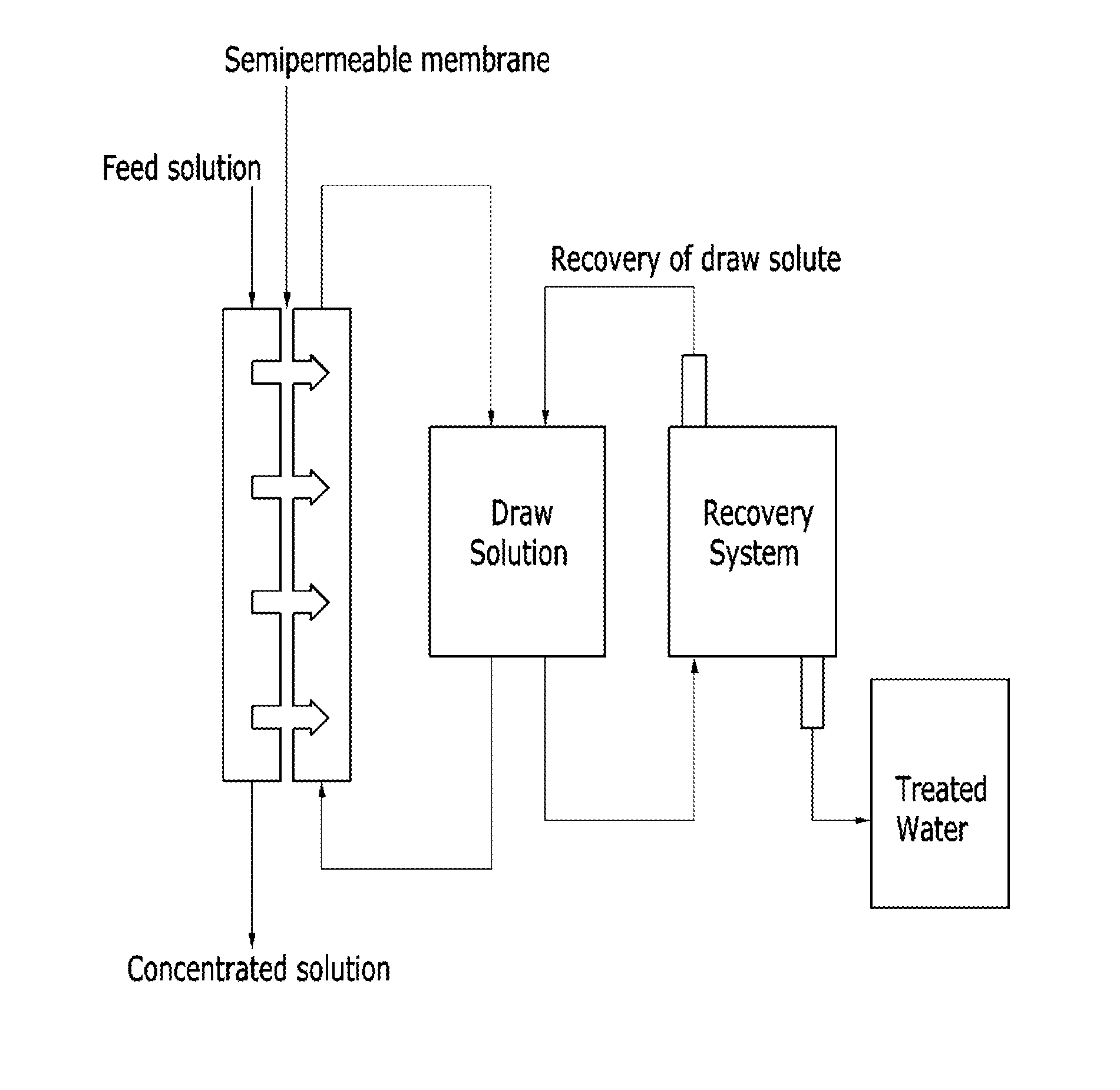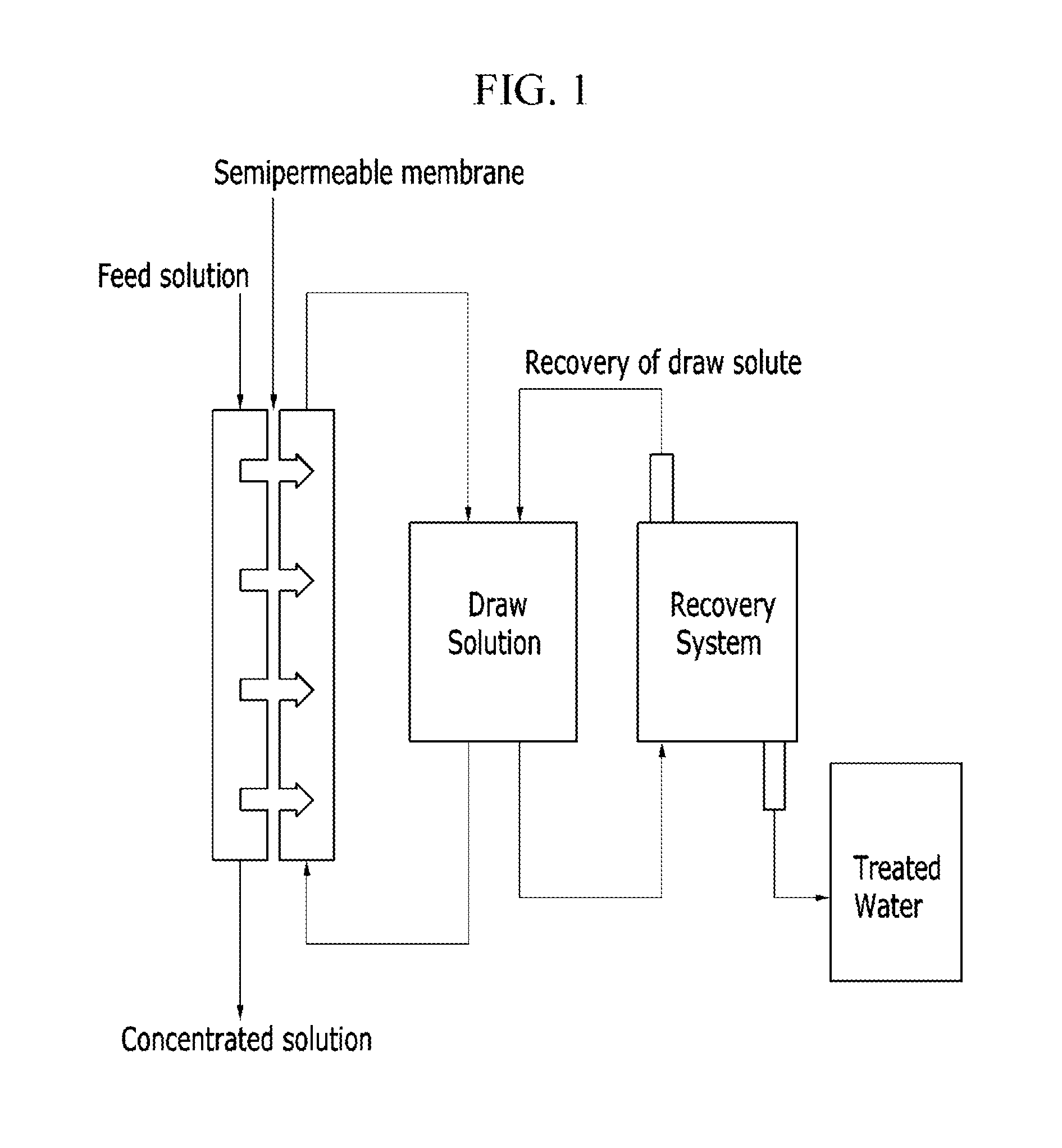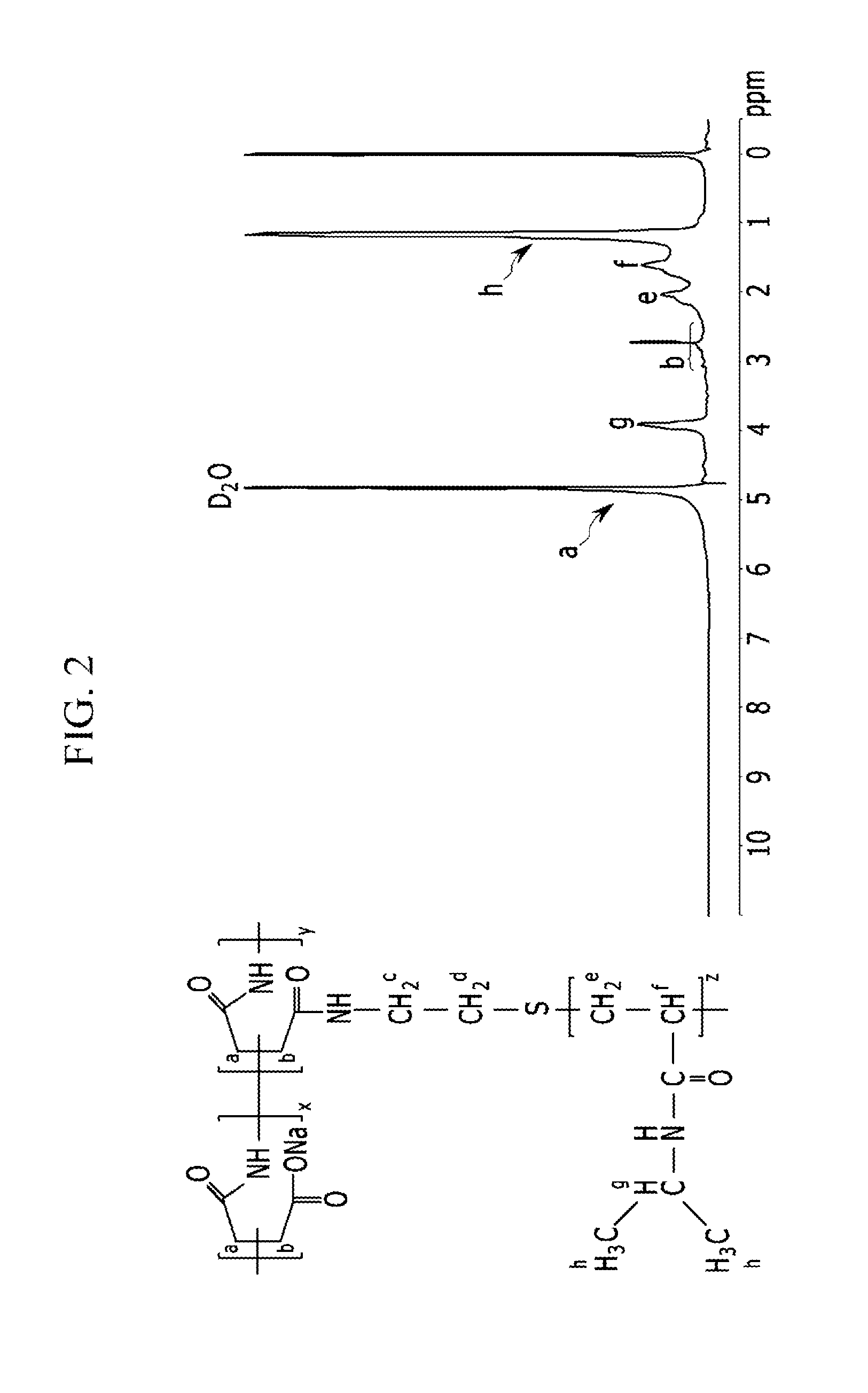Thermosensitive copolymers, forward osmosis water treatment devices including the same, and methods of producing and using the same
a technology of forward osmosis water treatment and copolymer, which is applied in the direction of climate sustainability, dialysis system, chemical complex/solubilisation, etc., can solve the problems of difficult complete elimination of ammonia, relatively high energy consumption, and the removal of draw solute including this compound entails a relatively high level of energy consumption, so as to achieve easy separation from the solution, high osmotic pressure, and high energy efficiency
- Summary
- Abstract
- Description
- Claims
- Application Information
AI Technical Summary
Benefits of technology
Problems solved by technology
Method used
Image
Examples
example
Example 1
[0112]A copolymer of the following Chemical Formula 11 is synthesized via Reaction Scheme 1.
[0113]1) Synthesis of NIPAAm Oligomer
[0114]An N-isopropylacrylamide oligomer (oligo-NIPAAm) represented by the following Chemical Formula 10 is synthesized via radical polymerization. 5.8 g (51.2 mmol) of a NIPAAm monomer, 0.175 g (1.53 mmol) of aminoethanethiol hydrochloride (AET-HCl) as a chain transfer agent, and 0.084 g (0.51 mmol) of azobisisobutyronitrile (AIBN) as an initiator are dissolved in 30 ml of dimethylformamide (DMF) and reacted at 72° C. under nitrogen atmosphere for 15 hours. A polymerized NIPAAm oligomer is precipitated in diethylether, centrifuged, and dried in a vacuum oven for one day.
[0115]In the above Chemical Formula 10, z is the degree of polymerization and is 18-25 as calculated by an end group analysis through 1H-NMR.
[0116]2) Synthesis of Thermosensitive Copolymer
[0117]0.97 g (10 mmol when being calculated with respect to the succinimide ring) of polysucci...
example 2
[0120]A thermosensitive copolymer is synthesized in the same manner as set forth in Example 1, except for using 0.97 g (10 mmol) of PSI (as synthesized, number average molecular weight: 18,000) and 10 g (4 mmol) of the NIPAAm oligomer represented by Chemical Formula 10. In the thermosensitive copolymer, the content of the first repeating unit is 40 mol % and the content of the second repeating unit is 60 mol %. The copolymer has a number average molecular weight of 127,800 g / mol as determined by GPC and 1H-NMR.
example 3
[0121]A thermosensitive copolymer is synthesized in the same manner as set forth in Example 1 except for using 0.97 g (10 mmol) of PSI (purchased from Bayer Co. Ltd., number average molecular weight: 2,000 to 3,000) and 0.5 g (0.2 mmol) of the NIPAAm oligomer represented by Chemical Formula 10. In the thermosensitive copolymer, the content of the first repeating unit is 2 mol % and the content of the second repeating unit is 98 mol %. The copolymer has a number average molecular weight of 6,527 g / mol as determined by GPC and 1H-NMR.
PUM
| Property | Measurement | Unit |
|---|---|---|
| concentration | aaaaa | aaaaa |
| LCST | aaaaa | aaaaa |
| solubility | aaaaa | aaaaa |
Abstract
Description
Claims
Application Information
 Login to View More
Login to View More - R&D
- Intellectual Property
- Life Sciences
- Materials
- Tech Scout
- Unparalleled Data Quality
- Higher Quality Content
- 60% Fewer Hallucinations
Browse by: Latest US Patents, China's latest patents, Technical Efficacy Thesaurus, Application Domain, Technology Topic, Popular Technical Reports.
© 2025 PatSnap. All rights reserved.Legal|Privacy policy|Modern Slavery Act Transparency Statement|Sitemap|About US| Contact US: help@patsnap.com



